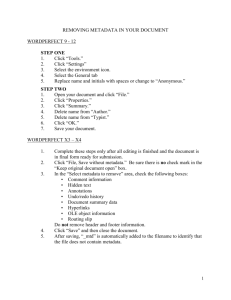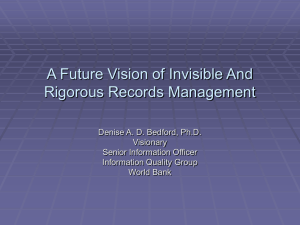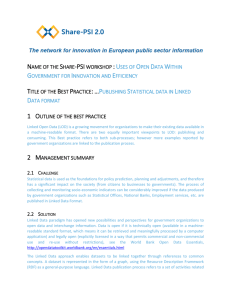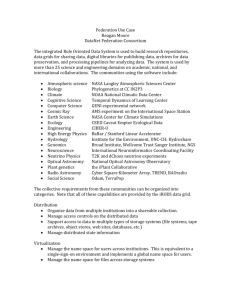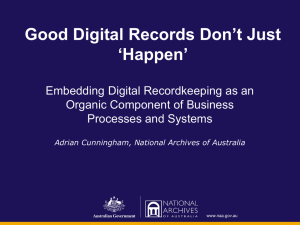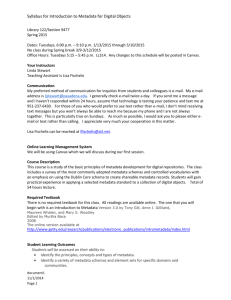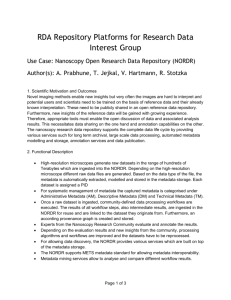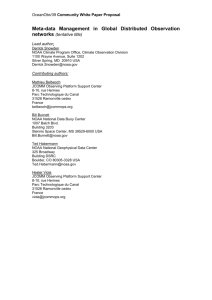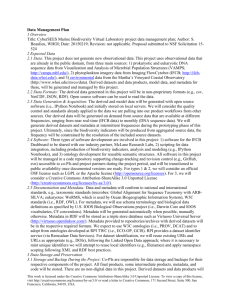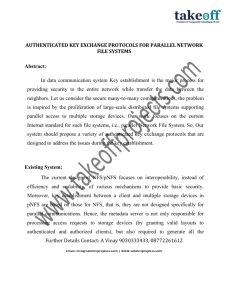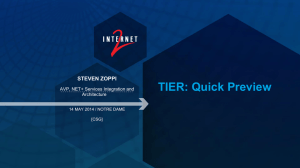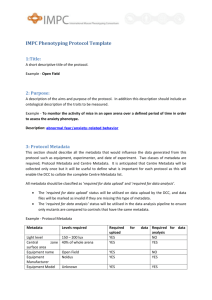1:1 Reconsidered - Dublin Core® Metadata Initiative
advertisement
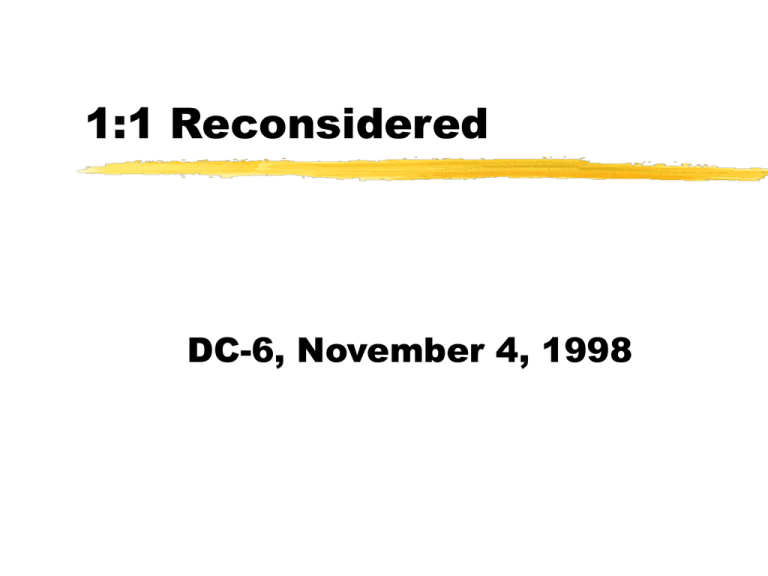
1:1 Reconsidered DC-6, November 4, 1998 History July 97: RLG Metadata Summit Archives, museums, libraries Identified need for flexible description of resource manifestations Metadata Summit: Meeting Report. Willy Cromwell-Kessler and Ricky Erway. July, 1997. <http://www.rlg.org/meta9707.html>. History DC-5, Helsinki, October 97 RLG proposal raised 1:1 principle emerges 1:1 Status Published in D-Lib Magazine “The [DC-5] discussion resulted in consensus concerning what came to be known as the 1:1 principle -- each resource should have a discrete metadata description, and each metadata description should include elements relating to a single resource. It is desirable to be able to link these descriptions in a coherent and consistent manner [emphasis added].” DC-5: The Helsinki Metadata Workshop: A Report on the Workshop and Subsequent Developments (http://www.dlib.org/dlib/february98/02weibel.html) 1:1 Status Crept into DC vocabulary Not represented in RFC Lacks operational definition and application guidelines Adoption by implementers uncertain Our Best Understanding of 1:1 Any given set of metadata refers to a single discrete resource Implications of 1:1 Precise granularity Proliferation of metadata records Large retrieval sets Increased record maintenance Access vocabulary split over multiple records Confusion applying selected elements, e.g., Creator, Publisher Example One record for resource with compound characteristics Digital image from photograph Metadata conveys aspects of original resource (e.g., photographer), and Metadata conveys aspects of digital manifestation (e.g., Format) Example One record for multiple formats Electronic text manifest in ASCII, Word, PDF Metadata conveys aspects of each manifestation Example One record for set of resources Collection of images Metadata conveys aspects of collection and each discrete resource RDF Model <rdf:Description about = “URI”> Appears to accommodate examples Summary If 1:1 (as we understand it) does not enable implementers to accomplish the requirements expressed above, specific expressed user needs are not addressed If 1:1 does enable implementers to accomplish the requirements expressed above, then the concept appears to accommodate user needs Regardless... Action Items Revisit “1:1” Determine usefulness and necessity as a DC precept Ensure that user needs are determined and addressed Formally adopt, allow, or reject Action Items If “adopt,” then: Define and ratify in RFC Develop application guidelines Monitor implementation experiences and user satisfaction



